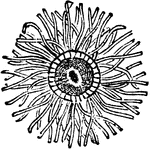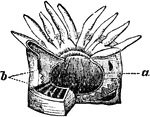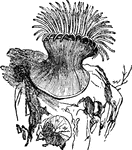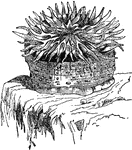Clipart tagged: ‘Actinia’

Actinia
"A genus of marine animals closely allied to the Hydraform Polypi, but of much greater size, and always…

Actinia
"A genus of marine animals closely allied to the Hydraform Polypi, but of much greater size, and always…

Anemone
"A popular name of the species of actinia and some other Actiniadae. It seems to have been first applied…

Anemone
"A popular name of the species of actinia and some other Actiniadae. It seems to have been first applied…

Anemone
"A popular name of the species of actinia and some other Actiniadae. It seems to have been first applied…
